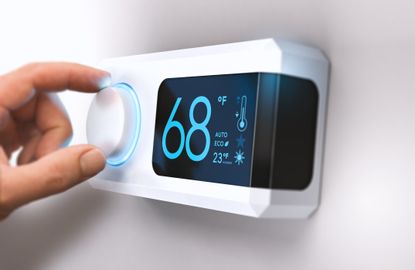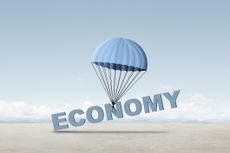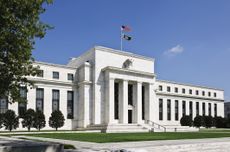Why Your Electric Bill Will Keep Climbing
There's no end in sight for energy rate hikes, so look for ways to curb your power use.


To help you understand what is going on in the economy, our highly experienced Kiplinger Letter team will keep you abreast of the latest developments and forecasts (Get a free issue of The Kiplinger Letter or subscribe). You'll get all the latest news first by subscribing, but we will publish many (but not all) of the forecasts a few days afterward online. Here’s the latest…
Your electric bills are no doubt up a lot. Unfortunately, we see no relief from that, as electricity demand rises to its highest pace in years, and state and federal officials push for a bigger role for renewable energy in the nation’s electric grid.
After roughly a decade of slow rate rises, electric prices have shot up since 2021. Households have seen a 24% increase from April 2021 to April 2024, a shock for many customers, and a contributor to inflation.

Sign up for Kiplinger’s Free E-Newsletters
Profit and prosper with the best of expert advice on investing, taxes, retirement, personal finance and more - straight to your e-mail.
Profit and prosper with the best of expert advice - straight to your e-mail.
Utilities are expecting a pickup in demand, especially due to new energy-hungry data centers. In 2022, they were forecasting electricity consumption to rise by 2.6% over the coming five years. But now, they are projecting 4.7% growth in the next five years.
Data centers whose chips run artificial intelligence are especially energy-intensive, and more are coming. Data centers, in general, account for 4.6% of demand. By 2026, that figure stands to rise to 6%. Meanwhile, more appliances and home systems are switching from natural gas to electricity, and more electric cars are plugging into the grid. Booming construction of chip plants and other high-tech manufacturing facilities is also lifting consumption. For instance, new Intel chip plants in Ohio are expected to tax the Midwest’s grid.
Rising demand is running into supply constraints
The switch to electricity generated from solar panels and wind turbines requires a lot more transmission lines and other infrastructure to connect than conventional, centrally located power plants. Sunshine and wind are free, but the panels, turbines, copper wires and transformers needed to harness them are expensive. Plus, their intermittent generation patterns require some form of backup power. (Round-the-clock power sources like geothermal and nuclear are increasingly prized by data center owners that want stable supplies.)
What this all adds up to is higher rates on your future electricity bills, unfortunately. How much higher depends on a lot of factors, such as your region, the price of natural gas (the leading fuel source for generation) and how quickly government officials try to ramp up renewable power. But to be safe, we recommend that you plan on your recent rate increases continuing for the next few years.
What you can do to save on energy bills
Consider efficiency upgrades where feasible. What exactly that means depends on your home or business’s energy needs, which you know best. But we advise taking a fresh look at any efficiency or conservation ideas. Investments that weren’t cost-effective when power rates were lower may make financial sense now. Homeowners, consider an energy audit to help find the best savings, such as tips on insulation. Note that such audits can qualify for a $150 home improvement tax credit. Also, it may pay to switch from an electric appliance or system to gas, if you have access to cheap natural gas and the cost of installing gas lines is bearable.
This forecast first appeared in The Kiplinger Letter, which has been running since 1923 and is a collection of concise weekly forecasts on business and economic trends, as well as what to expect from Washington, to help you understand what’s coming up to make the most of your investments and your money. Subscribe to The Kiplinger Letter.
Get Kiplinger Today newsletter — free
Profit and prosper with the best of Kiplinger's advice on investing, taxes, retirement, personal finance and much more. Delivered daily. Enter your email in the box and click Sign Me Up.

Jim joined Kiplinger in December 2010, covering energy and commodities markets, autos, environment and sports business for The Kiplinger Letter. He is now the managing editor of The Kiplinger Letter and The Kiplinger Tax Letter. He also frequently appears on radio and podcasts to discuss the outlook for gasoline prices and new car technologies. Prior to joining Kiplinger, he covered federal grant funding and congressional appropriations for Thompson Publishing Group, writing for a range of print and online publications. He holds a BA in history from the University of Rochester.
-
 Get 50% off Paramount Plus and a One-Month Free Trial
Get 50% off Paramount Plus and a One-Month Free TrialFor a limited time, you can score 50% off Paramount Plus — pay just $29.99.
By Erin Bendig Published
-
 Ford Shifts EV Strategy to Boost Profitability: What to Know
Ford Shifts EV Strategy to Boost Profitability: What to KnowFord announced it is delaying production of an electric vehicle plant and discontinuing its three-row SUV. Here's what that means for investors.
By Joey Solitro Published
-
 Kiplinger Special: How Businesses Should Budget for 2025
Kiplinger Special: How Businesses Should Budget for 2025Kiplinger Forecasts From fuel to AI software subscriptions, here's what you can expect to pay next year.
By John Miley Published
-
 Intel Braces for an Even Tougher Road Ahead
Intel Braces for an Even Tougher Road AheadThe Kiplinger Letter Amid a long, costly turnaround, Intel resets expectations again. Its new woes raise questions about U.S. industrial policy and global chip competition.
By John Miley Published
-
 Kiplinger Special: The Long-Term Future of the U.S. Economy
Kiplinger Special: The Long-Term Future of the U.S. EconomyThe Kiplinger Letter Kiplinger's report into what it will take the U.S. to maintain a healthy economic growth rate.
By David Payne Published
-
 Chinese E-Tailers Are Surging in the U.S. Market: The Kiplinger Letter
Chinese E-Tailers Are Surging in the U.S. Market: The Kiplinger LetterThe Kiplinger Letter Low costs and cheap shipping enable Temu and others to grab market share.
By Matthew Housiaux Published
-
 Future U.S. Economic Growth Hinges on Immigrants
Future U.S. Economic Growth Hinges on ImmigrantsThe Kiplinger Letter With the native birthrate slipping, employers are increasingly relying on foreign-born workers to staff up.
By David Payne Published
-
 Fed Rate Cuts Still on Hold
Fed Rate Cuts Still on HoldThe Kiplinger Letter With inflation stubbornly elevated, the Federal Reserve will keep interest rates high for now.
By David Payne Published
-
 A Spotlight on the Pacific States: The Kiplinger Letter
A Spotlight on the Pacific States: The Kiplinger LetterThe Kiplinger Letter Most Pacific states are seeing good job growth in multiple sectors including tourism, hospitality, and construction.
By David Payne Published
-
 The Robots Are Coming... But Not For a While
The Robots Are Coming... But Not For a WhileThe Kiplinger Letter There’s excitement in the tech sector over the potential of humanoid robots, but widespread adoption is likely to be years away.
By John Miley Published